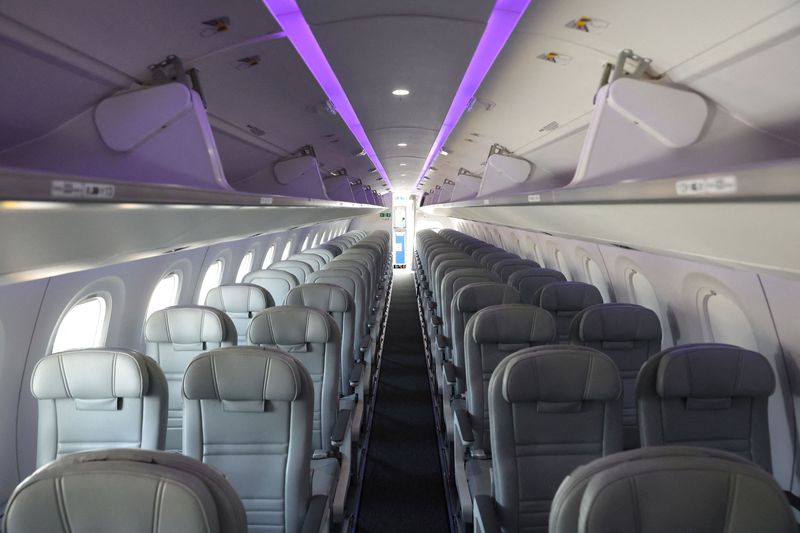By Gabriel Araujo
SAO PAULO (Reuters) -Aerolineas Argentinas and Luxair said on Wednesday they will buy Embraer's E195-E2 jet for their fleets, helping ease investor concerns about demand for the Brazilian planemaker's largest commercial aircraft.
Luxembourg-based Luxair placed a firm order for four E195-E2 planes and secured delivery positions for five more, while the Argentine flag carrier said it would add 12 aircraft to its fleet as replacements for its Embraer 190 jets.
Embraer shares ended the day up 0.5%, outperforming Brazil's benchmark stock index Bovespa, which rose 0.3%.
The E195-E2 is the largest aircraft in Embraer's E-Jet family of regional jets, accommodating up to 146 seats. Operators include Azul, KLM and Porter Airlines.
The Luxair announcement marks a significant fleet shift for the company, which flies only Boeing (NYSE:BA) 737 jets and De Havilland turboprops.
The companies did not reveal price details but multiple analysts estimated Luxair's firm order for planes set to be delivered from the fourth quarter of 2025 to be worth $300 million.
Aerolineas Argentinas said deliveries of its 12 E195-E2 aircraft would start next year and end in 2026.
"With this deal we manage to modernize our fleet, increase productivity and reduce costs per seat," said the carrier's CEO Pablo Ceriani.
The airline estimated the E195-E2 would allow it to increase supply and generate 16% more income.
Aerolineas Argentinas, which also operates larger Boeing 737 and Airbus A330 and A340 aircraft, did not say how much it will pay for the new jets.
JPMorgan analysts praised Embraer for growing its order book and noted its book-to-bill ratio is "easing the commercial concerns on E2 demand". Book-to-bill is a key industry metric for orders received versus products shipped in a period.

Santander (BME:SAN) analysts said the E2 orders "reinforce our positive view that 2024-25 could translate into a solid pipeline of deliveries for Embraer."
The world's third-largest planemaker after Airbus and Boeing said it is confident it will meet its outlook for aircraft deliveries in 2023, growing by about a quarter. It expects to maintain that pace next year.
